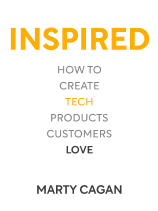

This article is an excerpt from the Shortform book guide to "Inspired" by Marty Cagan. Shortform has the world's best summaries and analyses of books you should be reading.
Like this article? Sign up for a free trial here .
What does the product ideation process look like? How does this process aid in product discovery?
In his book Inspired, Marty Cagan explores the product development process. One part of this process is product ideation or the process of creating and sharing new ideas. There are four parts to the product ideation process: interviewing customers, concierge testing, customer exploration, and hack days.
Keep reading for an explanation of each step.
Product Ideation
The third step in the product discovery process is generating ideas for products and product features (a.k.a. product ideation). There are four parts to this process.
1. Interviewing Customers
Interviewing current or past customers can help the team generate ideas, because customers who regularly use the product may notice issues with it and consider how it can be better. If we know, from the customer, what our company needs to do to make them use our service, they’ve almost generated some ideas for solutions for us. In every interview, the interviewer should consider the following questions:
- Does this person have an issue that we’re trying to solve?
- How is this person attempting to solve their problem right now?
- What could our company do that might make this person switch to our problem-solving mechanism?
Conduct many interviews with potential customers to help get the answers to these questions. Additionally, be open to hearing their answers, rather than advancing your own agenda. Finally, if possible, it is helpful to do these interviews in the subject’s home or a place where they feel comfortable. This will make them much more open to you.
At least one engineer, the product designer, and the product manager should attend these interviews. The product designer can thrive in interviews, because their focus is designing usable products.
After the interview, the team should debrief on what they learned right away. And once the team has the answers to the above questions, it’s much easier to generate good design ideas.
2. Concierge Testing
The idea behind concierge testing is that the company becomes the “concierge” for potential customers, helping them with their needs. After interviews with customers, product teams know their needs. The product teams then focus on helping specific customers with their problems. By trying to solve specific problems, the product teams are able to better understand these issues and how they might relate to more than one customer.
Again, an engineer, the product designer, and the product manager should do this together and debrief on their experience afterward.
3. Allowing Customer Exploration
In addition to generating ideas for designing new products, companies need to generate ideas for improving existing products. One way to do this is by observing how customers use a product, which may be different from the way its designers intended.
eBay’s “everything else” marketplace is an example. When eBay launched, they wanted to be a website that facilitated transactions mostly for collectibles and electronics. But they also created an “other” or “everything else” tab where people could buy/sell (mostly) whatever they wanted. EBay didn’t realize that their customers would sell items like cars on their site. But today, eBay has a huge market share in the used car industry.
eBay allowed their customers to behave in ways that they didn’t expect or prepare for with their service. By doing so, they grew their business exponentially, and in response to customer demand, they built up more infrastructure around customer interests like the used car market.
Obviously, this strategy only works in specific cases. If your product is ultra-targeted, it’s more difficult to pull off. But if done correctly, as we’ve seen, it can reap huge dividends.
4. Internal Hack Days
The final strategy for ideation is holding “hack days,” in which the company’s engineers, product managers, product designers, and senior executives spend the day brainstorming and solving problems. Hack days may focus on a specific issue or be unstructured.
The benefits include:
- Involving engineers in generating ideas, in addition to their usual design role.
- Improving morale by generating creativity and enthusiasm for the company’s larger mission.

———End of Preview———
Like what you just read? Read the rest of the world's best book summary and analysis of Marty Cagan's "Inspired" at Shortform .
Here's what you'll find in our full Inspired summary :
- A two-step plan for creating and sustaining successful technology products
- Why product managers are so important in product development
- How to avoid some of the biggest pitfalls that most tech companies fall into






